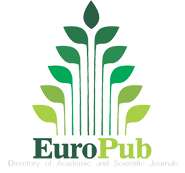Microclimate modification with different types of organic mulch in cucumber cultivation (Cucumis sativus L.)
Keywords:
organic mulch; cucumber; yield; cash cropAbstract
The use of organic mulch has become an agro-sustainable practice that recovers the soil, increases beneficial soil microorganisms, retains moisture, maximizes productivity and quality, and reduces environmental damage. The objective of the study was to evaluate the effect of organic mulch on cucumber crop yield, in which a Latin square design was used with different types of organic mulch: without mulch, banana, straw and cocoa. The results showed that straw, cocoa and banana mulches improved the soil microclimate compared to the soil without mulch, which was reflected in the dependent variables evaluated, in which it turned out that all treatments with mulch outperformed the control. The straw mulch treatment predominated, followed by cocoa and banana, improving crop yields by up to 1 t ha-¹, which is associated as a viable alternative to increase productivity in a more economical and environmentally friendly way.
Downloads
References
Camacho, F., Quevedo, J., & García, R. (2022). Mulch Orgánico: Aplicación y efecto en el cultivo de banano (Musa paradisiaca, L.). Revista Científica Agroecosistemas, 10(3), 65–71. https://aes.ucf.edu.cu/index.php/aes/article/view/563
Frutos, V., Pérez, M., & Risco, D. (2016). Efecto de diferentes mulches orgánicos sobre el cultivo de brócoli (Brassica oleracea L. var. Italica) en Ecuador. Idesia, 34(6), 61-66. https://scielo.conicyt.cl/pdf/idesia/v34n6/aop3816.pdf
Iriany, A., Hasanah, F., Roeswitawati, D., & Bela, M. F. (2021). Biodegradable mulch as microclimate modification effort for improving the growth of horenso; Spinacia oleracea L. Global Journal of Environmental Science and Management, 7(2), 185-196. https://www.gjesm.net/article_46237_0ac403d8684c2b924acb7c912ef1d0ec.pdf
Kader, M. A., Singha, A., Begum, M. A., Jewel, A., Khan, F. H., & Khan, N. I. (2019). Mulching as water-saving technique in dryland agriculture: review article. Bulletin of the National Research Centre, 43(1), 1-5. https://sci-hub.se/10.1186/s42269-019-0186-7
Kosterna, E. (2014). Organic Mulches in the Vegetable Cultivation: A Review. Ecological Chemistry and Engineering A, 21(4), 481–492. https://www.bing.com/search?q=DOI%3A%2010.2428%2Fecea.2014.21(4)39&qs=n&form=QBRE&sp=-1&lq=0&pq=doi%3A%2010.2428%2Fecea.2014.21(4)39&sc=0-30&sk=&cvid=3E56318A6D364F99935F72F9F80E5765&ghsh=0&ghacc=0&ghpl=
Kottek, M., Grieser, J., Beck, C., Rudolf, B., & Rubel, F. (2006). World map of the Köppen-Geiger climate classification updated. Meteorologische Zeitschrift, 15(3), 259–263. https://koeppen-geiger.vu-wien.ac.at/pdf/Paper_2006.pdf
Lowery, B., Hickey, Arshad, M.A., & Lai, R. (1996). Soil Water Parameters and Soil Quality. Methods for Assessing Soil Quality, 143–155. https://doi.org/10.2136/sssaspecpub49.c8
Melouk, A. M., Naglaa, K. H., Nada E. M., & Ali, M.S. (2021). Organic Mulch Impact on Vegetative Growth, Productivity and Fruit Quality of “Anna” Apple Trees. Hortscience Journal of Suez Canal University, 10(1), 85-94. https://hjsc.journals.ekb.eg/article_234773_3bb9a07c97bf1ab1700459ebcc557f02.pdf
Mohamed, E. A., Abo, S. A., Mahmoud, M. I., & El-Kasas, A. I. (2018). Hybrids Variation and Wheat Straw Mulch Effects on Vegetative Growth and Fruit Yield of Sweet Pepper Under El-Arish Area Conditions. SINAI Journal of Applied Sciences, 7(3), 187-196. https://sinjas.journals.ekb.eg/article_79035_b86938b714aa757636d8a124e629b13b.pdf
Organización de las Naciones Unidas para la Alimentación y la Agricultura. (2012). Cultivos y productos de ganadería. FAOSTAT. https://www.fao.org/faostat/es/#data/QCL/visualize
Plaza, D. (2021). Recarbonizing global soils: A technical manual of recommended sustainable soil management. FAO, 3, 6–17. https://doi.org/10.4060/cb6595en
Quezada, L., Vega, W., Jaramillo, E., Barrezueta, S., & Luna, A. E. (2023). Geotemperatura, flujo neto de calor del suelo y variables morfológicas del cultivo de soya (Glycine max L.) bajo condiciones de mulch plástico. Manglar, 20(1), 32–38. http://dx.doi.org/10.57188/manglar.2023.004
Ranjan, P., Patle, G. T., Prem, M., & Solanke, K. R. (2017). Organic Mulching- A Water Saving Technique to Increase the Production of Fruits and Vegetables. Current Agriculture Research Journal, 5(3), 371–380. https://doi.org/10.12944/carj.5.3.17
Silva, A., Ponce de León, J., García, F., & Durán, A. (1988). Aspectos metodológicos en la determinación de la capacidad de retener agua de los suelos del Uruguay. Boletín de Investigación, (10), 1–17. https://www.colibri.udelar.edu.uy/jspui/bitstream/20.500.12008/31373/1/boletin_de_investigacion_1988_10.pdf
Vincent, L., Casagrande, M., David, C., Ryan, M. R., Silva, E. M., & Peigne, J. (2019). Using mulch from cover crops to facilitate organic no-till soybean and maize production. A review. Agronomy for Sustainable Development, 39(5), 44. https://doi.org/10.1007/s13593-019-0590-2
Published
Issue
Section
License
Copyright (c) 2025 Roca. Scientific-educational publication of Granma province.

This work is licensed under a Creative Commons Attribution-NonCommercial-ShareAlike 4.0 International License.









































